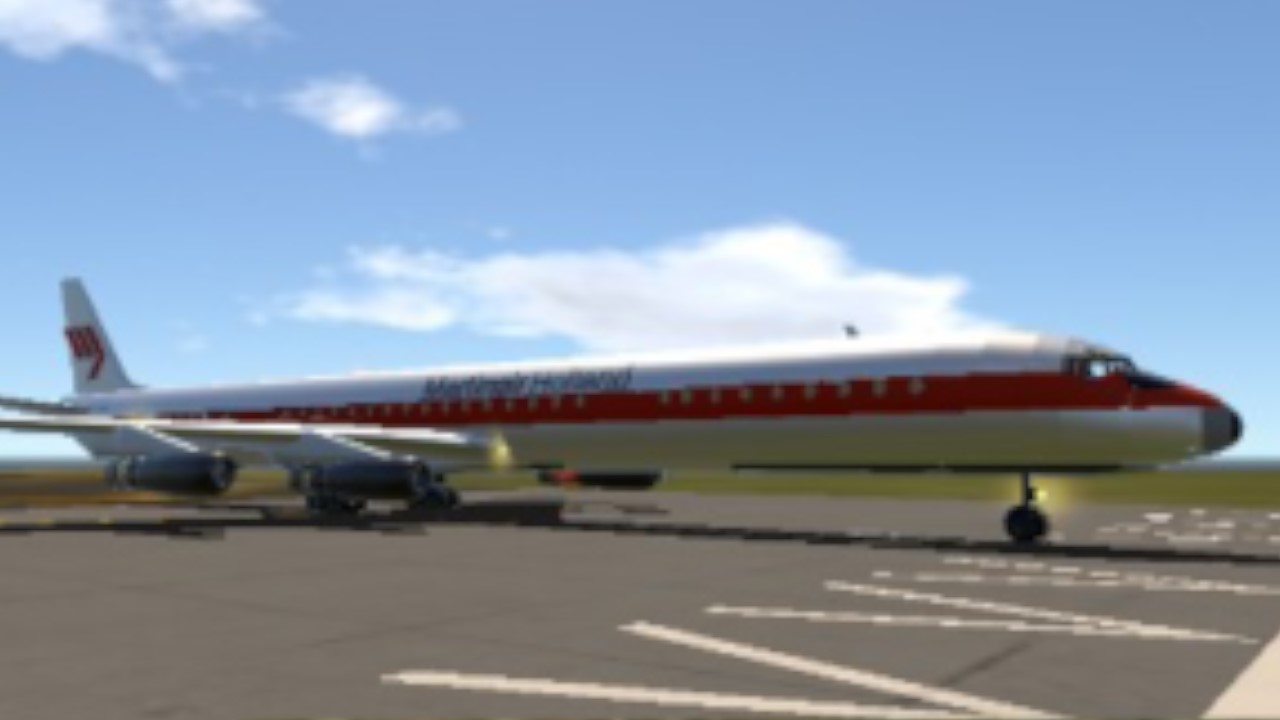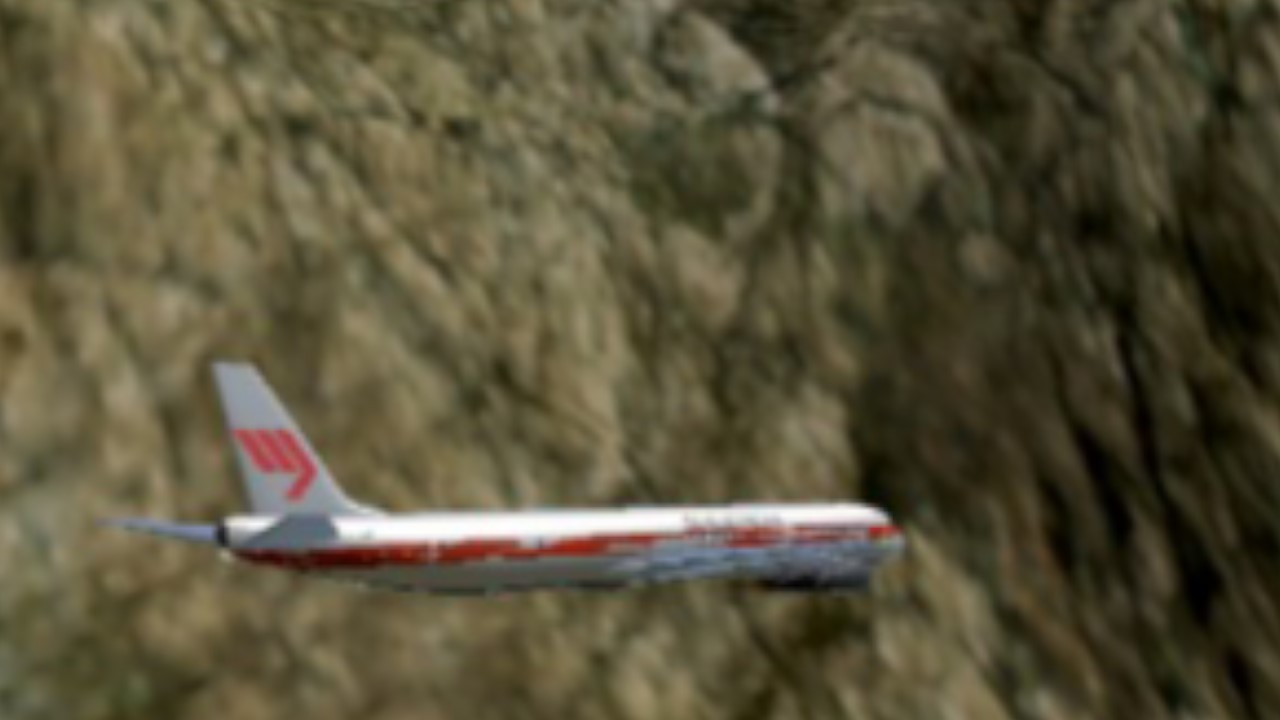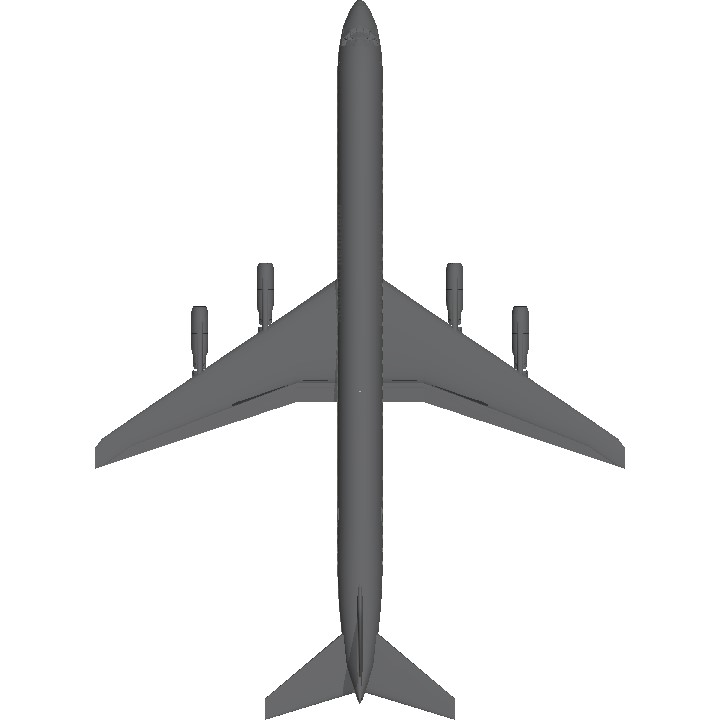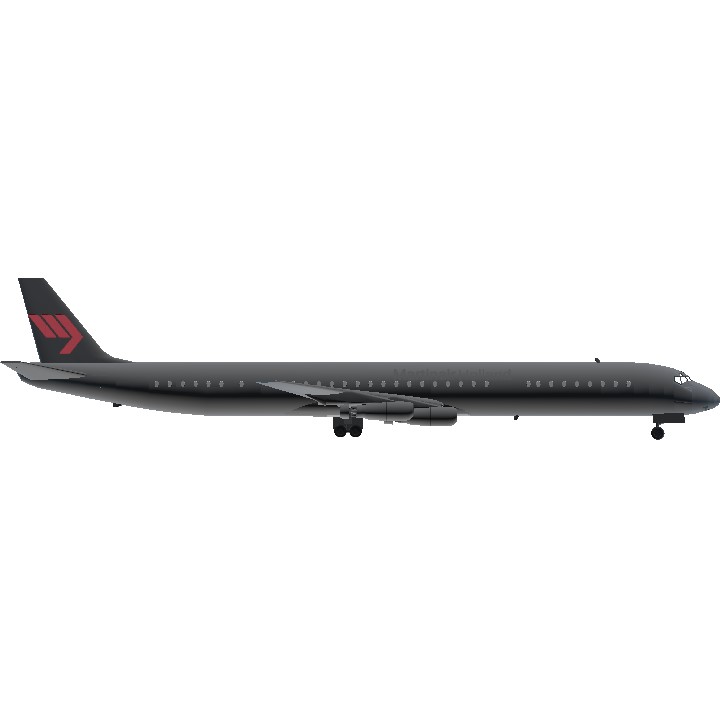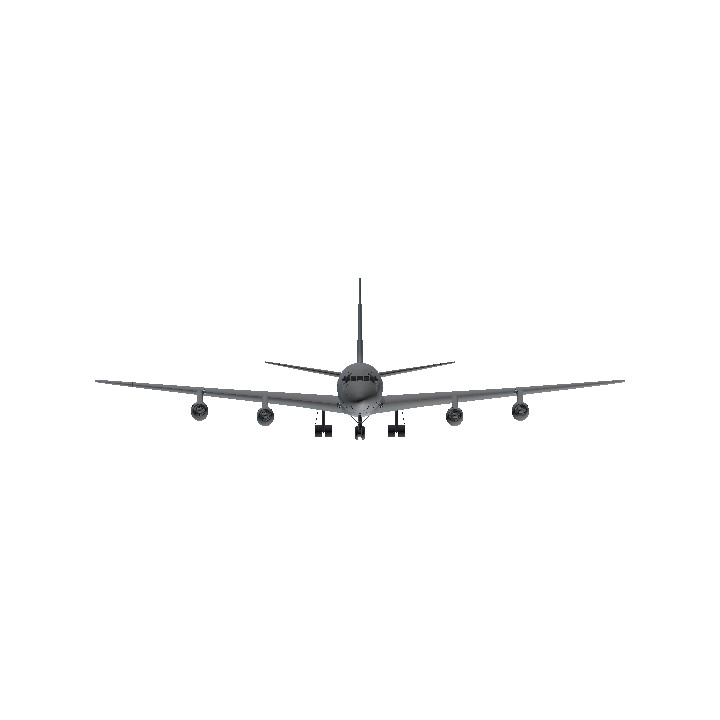Douglas DC-8
The Douglas DC-8 (sometimes McDonnell Douglas DC-8) is an early long-range narrow-body jetliner designed and produced by the American Douglas Aircraft Company. Work began in 1952 towards the United States Air Force's (USAF) requirement for a jet-powered aerial refueling tanker. After losing the USAF's tanker competition to the rival Boeing KC-135 Stratotanker in May 1954, Douglas announced in June 1955 its derived jetliner project marketed to civil operators. In October 1955, Pan Am made the first order along with the competing Boeing 707, and many other airlines soon followed. The first DC-8 was rolled out in Long Beach Airport on April 9, 1958, and flew for the first time on May 30. Following Federal Aviation Administration (FAA) certification in August 1959, the DC-8 entered service with Delta Air Lines on September 18.

DC-8-72 over the Sierra Nevada Mountains of California in 1998. This aircraft, operated by NASA, was re-engined with CFM56s.
Permitting six-abreast seating, the four-engined, low-wing jet aircraft was initially produced in four 151 ft (46 m) long variants. The DC-8-10 was powered by Pratt & Whitney JT3C turbojets and had a 273,000 lb (124 t) MTOW, the DC-8-20 had more powerful JT4A turbojets for a 276,000 lb (125 t) MTOW. The intercontinental models had more fuel capacity and up to 315,000 lb (143 t) MTOW, powered by JT4As for the Series 30 and by Rolls-Royce Conway turbofans for the Series 40. The Pratt & Whitney JT3D powered the later DC-8-50 and Super 60 (DC-8-61, -62, and -63) as well as freighter versions, and reached a MTOW of 325,000 lb (147 t). A stretched DC-8 variant wasn't considered initially, leading some airlines to order the competing Boeing 707 instead.
The improved Series 60 was announced in April 1965. The DC-8-61 was stretched by 36 ft (11 m) for 180–220 seats in mixed-class and a MTOW of 325,000 lb (147 t). It first flew on March 14, 1966, was certified on September 2, 1966, and entered service with United Airlines in February 1967. The long-range DC-8-62 followed in April 1967, stretched by 7 ft (2.1 m), could seat up to 189 passengers over 5,200 nautical miles [nmi] (9,600 km; 6,000 mi) with a larger wing for a MTOW up to 350,000 lb (159 t). The DC-8-63 had the long fuselage and the enlarged wing, freighters MTOW reached 355,000 lb (161 t).
The DC-8 was produced until 1972 with 556 aircraft built; it was superseded by larger wide-body airliners including Douglas' DC-10 trijet. Noise concerns stimulated demand for a quieter variant; from 1975, Douglas and General Electric offered the Series 70 retrofit, powered by the quieter and more fuel-efficient CFM56 turbofan engine. It largely exited passenger service during the 1980s and 1990s, but some re-engined DC-8s remain in use as freighters.
Martinair
Martinair (legally Martinair Holland N.V.) is a Dutch cargo and former passenger airline headquartered and based at Amsterdam Airport Schiphol and a subsidiary of Air France–KLM. The airline was founded in 1958 by Martin Schröder. Since 2011, Martinair has operated entirely as a cargo airline with scheduled services to 20 destinations worldwide and additional charter flights. Prior to that date, passenger flights were also operated.

Martinair logo's
Garuda Indonesia (formerly Garuda Indonesian Airways)
Garuda Indonesia is the flag carrier of Indonesia, headquartered at Soekarno–Hatta International Airport near Jakarta. A successor of KLM Interinsulair Bedrijf, it is a member of SkyTeam airline alliance and the second-largest airline of Indonesia after Lion Air, operating scheduled flights to a number of destinations across Asia, Europe, and Australia from its hubs, focus cities, as well as other cities for Hajj. It is the only Indonesian airline that flies to European airspace.

Garuda Indonesia logos
At its peak from the late 1980s to the mid-1990s, Garuda operated an extensive network of flights all over the world, with regularly scheduled services to Adelaide, Cairo, Fukuoka, Johannesburg, Los Angeles, Paris, Rome, and other cities in Europe, Australia and Asia. In the late 1990s and early 2000s, a series of financial and operational difficulties hit the airline hard, causing it to drastically cut back services. In 2009, the airline undertook a five-year modernization plan known as the Quantum Leap, which overhauled the airline's brand, livery, logo and uniforms, as well as acquiring a newer, more modern fleet and facilities and renewing focus on international markets. It earned Garuda awards such as Most Improved Airline, 5-Star Airline, and World's Best Cabin Crew by Skytrax. Garuda has since fallen back to financial difficulties exarcebated by dysfunctional management and corruption. However, it has maintained its service and safety standards. The top management was replaced in 2020 and a new restructuring programme is also underway.
Garuda also operated a budget subsidiary, Citilink, that provided low-cost flights to multiple Indonesian destinations and was spun-off in 2012. In November 2018, the airline took over operations as well as financial management of Sriwijaya Air by a cooperation agreement (KSO); the contract expired in December 2019.
Martinair Flight 138
Martinair Flight 138 was a charter flight of Martinair from Surabaya to Jeddah with stopover in Colombo. On 4 December 1974, the Douglas DC-8 operating the flight crashed into a mountain shortly before landing, killing all 191 people aboard – 182 passengers, all of whom were Indonesian Hajj pilgrims, and nine crew members. The crash remains the deadliest in Sri Lankan aviation history and the third-deadliest involving a DC-8, after Arrow Air Flight 1285R and Nigeria Airways Flight 2120. At the time of the crash, it was the second-deadliest aviation accident in history, after the crash of Turkish Airlines Flight 981 which occurred earlier that same year.

The aircraft involved in the accident seen in 1972 while still in service with Loftleiðir.
Flight 138 departed Surabaya for Jeddah via Colombo at approximately 12.03 UTC. At around 16.30 UTC air traffic control in Colombo cleared the flight. At 16.38 UTC another air traffic controller is said to have intervened, cleared the flight down to 5,000 ft (1,500 m) and reported clearing to 8,000 ft (2,400 m). Colombo approach then cleared the flight down to 2,000 ft (610 m) at 16.44 and told the flight to expect a runway 04 approach. The crew aboard Flight 138 were then asked to report when the airport was in sight. The crew then continued their descent until the aircraft crashed into Saptha Kanya mountain range at an altitude of approximately 4,355 ft (1,327 m) and at around 40 nmi (74 km; 46 mi) east of Colombo.
Features
The gear door registration is gone
Added realistic
Notes
The operated by Garuda Indonesian Airways
sorry this thumbnail is low quality
Real Photo

The aircraft involved, seen at Amsterdam-Schiphol Airport before the crash in November 1974

Pieces of the wreckage
Specifications
Spotlights
- OldDaiBilibili 8 months ago
General Characteristics
- Predecessor Douglas DC-8-61 United Airlines
- Created On Android
- Wingspan 143.3ft (43.7m)
- Length 194.5ft (59.3m)
- Height 44.2ft (13.5m)
- Empty Weight 226,049lbs (102,534kg)
- Loaded Weight 265,597lbs (120,473kg)
Performance
- Power/Weight Ratio 1.284
- Wing Loading 77.8lbs/ft2 (379.9kg/m2)
- Wing Area 3,413.1ft2 (317.1m2)
- Drag Points 24894
Parts
- Number of Parts 582
- Control Surfaces 9
- Performance Cost 3,467

